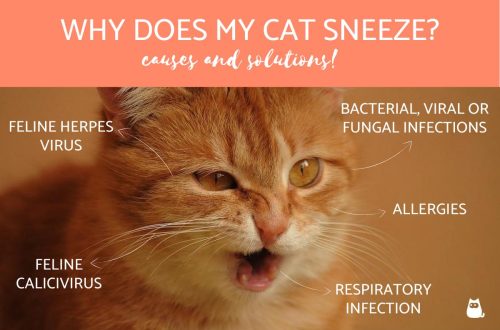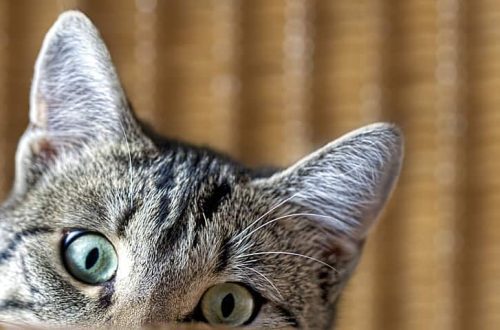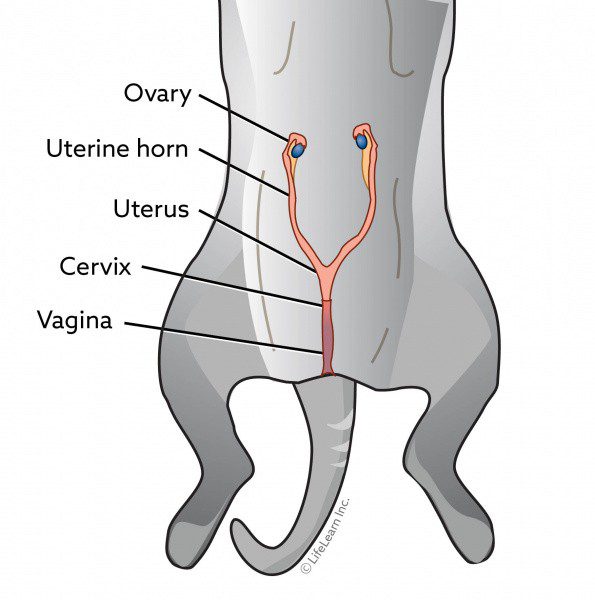
Sterilization of cats: the pros and cons, how it is carried out and what to do after it
Contents
- What is cat sterilization, main types
- Pros and cons of spaying cats
- At what age can a cat be spayed?
- Indications and contraindications for sterilization
- How to prepare a cat for spaying
- Cat sterilization procedure: methods and features
- What anesthesia is used to sterilize cats
- How to care for a cat after spaying
- What are the complications after spaying a cat?
- Features of sterilization of cats in different conditions of the body
What is cat sterilization, main types
In everyday life, sterilization is understood as an operation, as a result of which a cat (or a cat) loses its sexual instinct. Due to some confusion in the terms “castration” and “neutering” (in the first case, all reproductive organs will be removed, and the second implies limited manipulations), in the future we will talk about cat sterilization as a general concept.
Pregnancy can be prevented in a cat by surgical and chemical methods. Among the operational impacts, the following types of sterilization are distinguished:
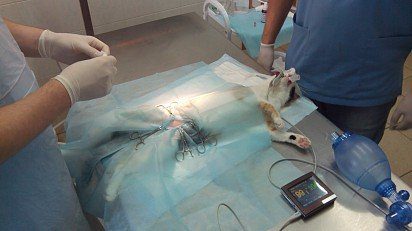
cat spaying surgery
- removal of the ovaries (use if the cat has not given birth);
- removal of the ovaries and uterus (used for giving birth, as well as for medicinal purposes according to indications);
- removal of the uterus (rarely performed, as hormone production and corresponding behavior are preserved);
- tubal ligation of the uterus (also rarely done, due to the preservation of hormone levels and the development of complications).
An alternative method of surgical intervention is the use of hormonal chemicals in the form of drops, tablets or injections. Depending on the amount of the active ingredient and the composition of the funds, they can suppress the sexual instinct for 1 to 6 or more months.
Most veterinarians advise to resort to the surgical method once, and not to give the cat hormonal drugs throughout her life. This is due to lower financial costs and fewer complications.
Attention: the frequent use of hormonal drugs threatens the development of oncological pathologies, digestive, neurological and endocrine disorders, and in the case of pregnancy, congenital fetal anomalies, miscarriages.
Pros and cons of spaying cats
Neutering cats has both positive and negative sides, outlined in the table below.
Pros
- You don’t have to get rid of the kittens.
- The behavior of the animal will not cause inconvenience.
- Timely sterilization helps to increase the life expectancy of the pet.
- It is possible to prevent the development of many diseases of the reproductive sphere of a cat associated with estrus without mating, childbirth and hormonal changes.
- The risk that a pet will get lost or contract an infectious disease in the event of an escape is reduced to a minimum.
Cons
- An operation under anesthesia is stressful for the animal’s body.
- The likelihood of complications in the postoperative period.
- The risk of developing obesity, diabetes and other diseases associated with changes in hormonal levels.
- Recovery takes a long time (about two weeks), requires the constant wearing of special devices.
- If the owner “changes his mind”, it will be impossible to restore the ability to give birth to kittens.
At what age can a cat be spayed?
When asked when it is better to sterilize a cat, veterinarians answer: at 7-8 months. It is believed that it was during this period of animal development that all organ systems are fully formed, the cat is ready for conception, but there has not yet been a pregnancy.
Puberty of the pet may occur earlier or later than the specified period. To determine the optimal interval, you will need to periodically show it to the veterinarian, do examinations. An operation on an adult cat or a very young one is fraught with serious complications and health problems in the future.
Indications and contraindications for sterilization
In addition to the fact that cat sterilization is carried out due to the desire of the owner, the operation may have a therapeutic purpose and be of a planned or emergency nature. Among the indications:
- neoplasms in the reproductive organs;
- inflammatory processes;
- changes in the mammary glands due to hormones;
- previously poorly performed sterilization;
- prevention of various diseases (tumors, cysts, purulent processes, and so on).
Do not spay if the cat has:
- age less than 6 months or older than 10 years;
- revealed pathologies of the cardiovascular system;
- estrus;
- pregnancy;
- inflammatory processes in the body and some other disorders.
Such contraindications to surgery relate mainly to cases of normalization of the cat’s behavior, elimination of the sexual instinct. If we are talking about saving the life of an animal (for example, with an abnormally developing pregnancy), then sterilization becomes justified.
How to prepare a cat for spaying
Neutering a cat requires preliminary preparation. With the exception of clinical cases, the animal must be absolutely healthy. This is especially true of vaccinations and antiparasitic treatment.
Vaccination must be carried out at least one month before the operation. It significantly reduces the risk of developing infectious complications in the postoperative period, when the pet’s immune system is weakened. In the absence of vaccinations, before the intervention, the cat is given a serum injection, which ensures stable immunity in the next 14 days. Anthelmintic measures are carried out at least 10 days before sterilization.
Preparations also include:
- laboratory tests of urine, blood;
- ultrasound examination of the reproductive organs;
- cardiogram.
At the discretion of the doctor, X-rays, respiratory examinations, and others are additionally prescribed.
Important: immediately before surgery, the animal must be limited in food (8-12 hours before) and water (3 hours).
In advance, you should take care of the carrier in which the cat will be transported from the clinic home. Additionally, you will need an absorbent diaper in case of involuntary outflow of urine, as well as a sheet or blanket to prevent hypothermia.
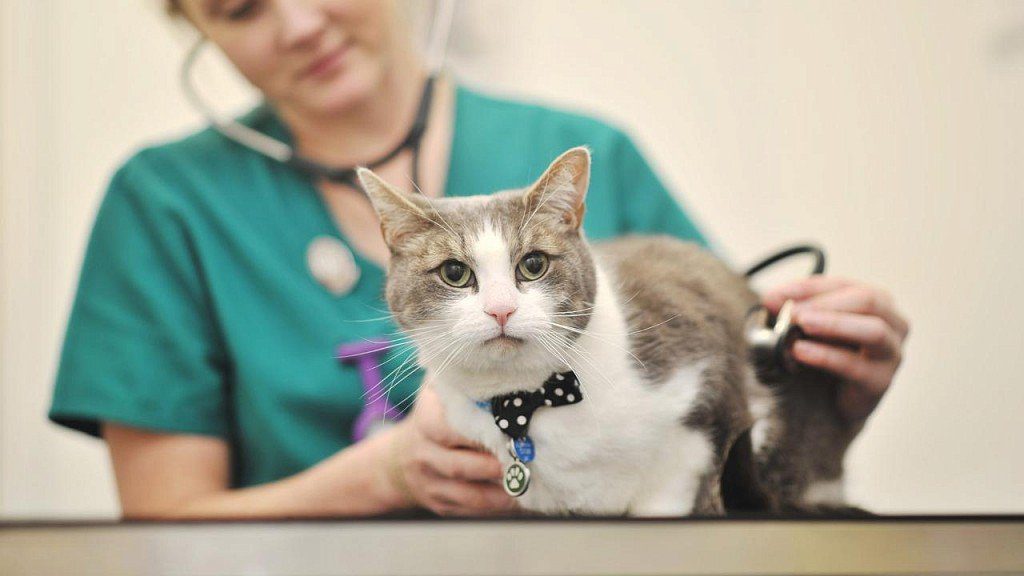
Examining a cat before spaying
Cat sterilization procedure: methods and features
How cats are spayed depends on the method chosen. There are three ways to carry out the operation.
- classical method. It is a skin incision on a previously prepared area along the white line of the abdomen just below the navel. The incision is about 3 cm long. This method allows you to remove both the uterus and the ovaries. Its advantage is the possibility of direct access of a specialist to the cat’s organs. The disadvantage is the large length of the suture, which can provoke the penetration of infection and the development of bleeding.
- With a side cut. The dissection of the abdominal cavity is carried out to the side of the midline of the abdomen, while the length of the wound does not exceed 1 cm. The method is not very convenient for performing manipulations and is used in situations where the classical version is not possible, or for tubal ligation. The advantage of the method is the rapid healing of a small incision, which reduces the risk of postoperative complications.
- Laparoscopic sterilization of cats. It makes it possible to remove both the uterus and the ovaries through a small puncture in the abdominal wall. The whole process takes place with the help of a special device, and the actions of the doctor are displayed on the monitor screen in real time. The method is characterized by minimal trauma to the tissues of the animal, a reduction in the recovery period and a low likelihood of complications. However, it is rarely used, since it requires the availability of appropriate equipment in the clinic, the skills of a veterinarian, which ultimately adds up to a high cost of the procedure.
Each type of operation is performed under general anesthesia, and the time for spaying cats is determined by the chosen method and can range from 15-20 minutes to one hour or more.
What anesthesia is used to sterilize cats
Sterilization of both domestic and stray cats takes place under general anesthesia. Most often it is intravenous anesthesia, provided with drugs Ketamine, Diprivan, Zoletil. But sometimes the removal of the reproductive organs is carried out under endotracheal anesthesia. True, in front of him, the cat is still euthanized with an intravenous agent.
How to care for a cat after spaying
Few owners have a complete understanding of what to do after spaying a cat. Meanwhile, it is the postoperative period that determines the further state of health of the pet.
If it is not possible to leave the cat in the clinic for the first few days, and she is “discharged” home immediately after the operation, you need to learn in detail all the nuances of care from the veterinarian. Depending on the condition of the pet before and after the intervention, she may be prescribed antibacterial drugs, anti-inflammatory or painkillers. In addition, the specialist will tell you when (and whether it is necessary) to come to remove the stitches, how often to do dressings, what means are best to use in this case, and other information. It is good if the veterinarian can give his phone number so that in case of a sharp deterioration in the condition, he can be contacted without delay.
Features of transporting an animal from the clinic
You need to take the cat home not in your arms, but by placing it in a special carrier with a flat and even bottom. Any shaking or displacement of the torso can cause the seams to diverge. It is advisable to cover the animal with a light blanket or warm cloth, since due to the operation and anesthesia, the pet’s body temperature becomes less than normal.
Where is the best place to put a cat in an apartment
While the cat is moving away from sterilization, it is best for her to be on the floor. The owner needs to arrange the bed in advance: choose a spacious place where no one can disturb the animal, lay a blanket, put waterproof diapers on top. To ensure a free outflow of saliva, the pet should be placed on its right side.
Be sure to make sure that the place reserved for the cat is not in a draft or near a heater. However, you still need to cover it; for this, it is enough to take a light but dense fabric.
What to wear on a cat after sterilization
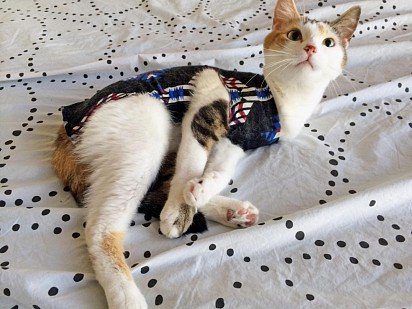
Cat in a blanket after sterilization
The belly of a cat after sterilization should be isolated from the external environment to avoid infection of the wound. To do this, use a blanket – a special clothing that has slots for the paws, fastened with Velcro or braid on the back of the animal. The device should be worn for about 10-14 days, depending on the complexity of the operation, the condition of the seam and other nuances.
Cat blankets should be washed, ironed, and then worn again. Such clothes are removed only for the treatment of the surgical wound. So that the pet cannot remove it from itself, no threads or loose ends of the strings should stick out on the blanket. The product is selected only according to individual sizes, since the animal can easily remove a wide blanket, and a narrow one will disrupt blood flow.
Some owners sew such bandages on their own. Sometimes tights or socks are used as an improvised means, having previously cut holes. Whether a cat will wear such a blanket is unknown. Judging by the stories of the owners on the network, many animals arrange concerts or behave aggressively, even without fully recovering from anesthesia. As a result, the blanket is replaced with a collar, and the bandage on the wound is fixed with a plaster.
Coming out of anesthesia
The behavior of the cat after the operation due to anesthesia becomes inadequate and unpredictable. During the first 1-2 days, the animal should not be left alone for a long time. The exit from the narcotic state is accompanied by complete disorientation in space, staggering, undermining of the limbs, screaming, meowing, aggression and other manifestations.
The duration of the cat’s recovery from anesthesia can be from 5-6 hours to a day or more. But the pet begins to recover, as a rule, already 2-4 hours after the operation. It is not necessary to give her to drink at this time, and even more so to eat. It is allowed to moisten the oral cavity with water from a spoon or syringe.
How to feed a cat after spaying
Within 24 hours after sterilization, it is forbidden to feed the cat. This is due to the risk of a gag reflex (due to anesthesia) and reduced bowel activity. Any contraction of the muscles of the abdomen or intestinal wall can open the wound or provoke intra-abdominal bleeding. Liquid food in the form of broth, grated and mixed with meat broth, porridge on water can be introduced into the animal’s diet on about the second day. A liquid diet will be required until the stitches are removed.
If the cat refuses food and water
The first day after sterilization, the pet may not experience appetite. The alarm should be sounded if the cat does not eat or drink for more than 2 days, and all attempts to give her liquid food or water with a syringe fail. To recover, she definitely needs to take at least the broth. To prevent dehydration and exhaustion of the pet, the owner should contact the clinic – an alternative may be intravenous nutrition.
Toilet problems
It happens that a cat after sterilization does not go to the toilet. If this happens within 1-2 days after the operation, then you should not worry. Due to preoperative fasting and dehydration, she simply has nothing to empty her bowels with. Other reasons for this phenomenon include:
- stress from the operation;
- the effect of anesthesia or drugs;
- blanket interferes;
- stitch hurts.
The lack of emptying with a normal appetite may indicate constipation. In this case, laxatives, a liquid diet will help. If more than 3 days after sterilization, the cat has problems with the toilet, you need to urgently contact a veterinarian.
What are the complications after spaying a cat?
Despite the simplicity of the operation, the removal of the reproductive organs in a cat can lead to the development of complications. One of the most common is a bump on the abdomen. It may occur due to soft tissue edema or excessively dividing young cells necessary for overgrowing of the suture. In these cases, the lump after sterilization is not dangerous and gradually disappears on its own. But if the formation arose as a hernia of internal tissues through the seam, then an emergency operation will be required.
Other possible complications after spaying a cat include:
- allergy to pharmaceuticals;
- deterioration in the activity of the kidneys, heart, liver due to anesthesia;
- bleeding;
- neoplasms (in the long-term period).
The development of complications depends not only on the quality of the operation or the method of its implementation, but also on other nuances: at what age the cat, the state of her health at the time of the procedure, postoperative care, and so on.
Features of sterilization of cats in different conditions of the body
Sterilization of a cat must take place in accordance with certain requirements for its age and hormonal status. However, there are situations when there is a need for surgery during pregnancy, estrus and other conditions. The owner must know in what cases this is permissible and what threatens.
During estrus
Removal of the reproductive organs during this period is not recommended, as a sharp change in the hormonal background of the cat’s body will negatively affect its future health. The recovery period will also be longer and harder; increased risk of postoperative complications.
Veterinarians recommend sterilizing a cat a week after the end of estrus and no later than 2 weeks before it starts.
During pregnancy
Neutering a pregnant cat is also fraught with negative consequences. It is justified only in the following cases:
- abnormal development of fetuses;
- cat disease caused by pregnancy, threatening her life;
- the animal is unable to bear kittens due to health or age.
After childbirth
Sterilization of cats after childbirth should take place in accordance with certain rules:
- if the pet does not feed the kittens, you should wait about a month;
- if the cat is lactating, then it will take 2 to 3 months after giving birth.
The most suitable time for the sterilization of the animal after lambing is 60 days. During this period, the hormonal background normalizes, the uterus will acquire its usual size, blood circulation in the pelvis will be restored.
Indications for emergency sterilization immediately after childbirth may be the following situations:
- rupture of the uterus during the birth of kittens;
- neoplasms of the reproductive organs discovered during gestation;
- anomalies, damage to the placenta;
- the presence or threat of severe postpartum hemorrhage.
While feeding kittens
As in the previous case, sterilization of a nursing cat is done only for certain indications. In addition to the above, it is allowed to carry out the operation at the request of the owner if the death of newborns has occurred, and the mother still has milk. Or, if the animal is used to walking on the street, the cat will be able to get pregnant even during feeding. Such situations are a common reason that the owners cannot “catch” the necessary period of time to sterilize the reveler.
The cost of spaying cats
There are several factors that affect the price of cat spaying:
- pricing policy and the level of the veterinary clinic;
- type of operation;
- conditions of the operation (suture material, anesthesia, and so on);
- the complexity of the surgical intervention;
- postoperative period (care in the clinic, the introduction of additional drugs, complications, intravenous feeding, etc.).
On average, sterilizing a cat costs from 1200 to 5000 rubles.
Is it possible to sterilize a cat for free
Sterilization of cats is not a mandatory, socially necessary veterinary service. However, in many cities, promotions are periodically held, according to which stray cats can be sterilized for free. In addition, in some clinics, for certain reasons (recently opened, lack of experience among the staff, as an advertisement), prices for this service are reduced to 400-500 rubles.
Is it possible to sterilize a cat at home
Neutering a cat can take place at home. This is a simple operation that does not take much time and does not require the presence of an assistant. The owner can, for an additional fee, agree in advance with the veterinarian about the date of the event.
Neutering a cat at home has advantages: the animal does not need to be taken to the clinic and back, and the risk of “catching” an infection is also reduced. The negative point is that if a difficult situation arises in the postoperative period, the veterinarian will not be able to be there for resuscitation.
Neutering a cat, although it is a surgical intervention in the body of an animal, is a more humane attitude towards it than drowning or throwing out kittens. The owner needs to think carefully before taking home a cat. If horror arises at the thought of numerous offspring, then you need to sterilize the pet and save her and yourself from torment.



